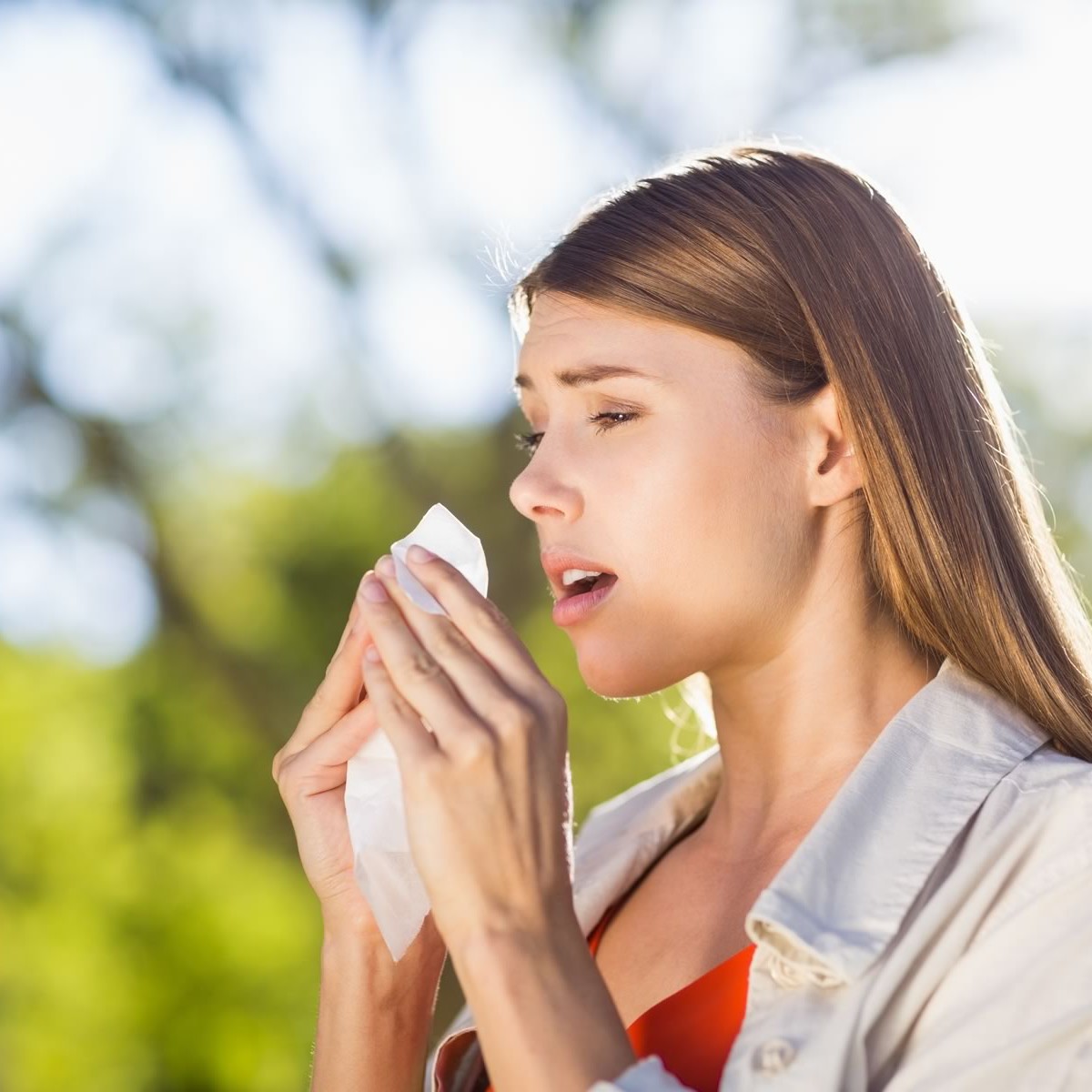Allergic diseases are becoming more common, and they don’t only affect people in spring. While high levels of pollen at spring time increase the rate of hay fever, lower levels of pollen occur throughout the year and can cause allergic huffing and puffing, sneezing and wheezing at any time of year.
However, pollen is just one of many allergens, the little nasties that cause allergic conditions including allergic rhinitis (hay fever), asthma, allergic dermatitis and allergy to food or insect bites. Others include pets, pollutants and house dust mites, which are found in homes, backyards and the great outdoors, throughout the year.
If you suffer from year-round allergies, sometimes called perennial allergies, you’re not alone. But there are many ways of dealing with allergies. The best measure for you depends on the particular allergen; that is, what’s causing the allergic reaction.
Allergens cause allergy, but what are they?
Allergens are substances in indoor and outdoor environments which cause allergic reactions in some (but certainly not all) individuals. Dust mites and mold are two common allergens which like to take up residence, uninvited, in your home. Pets are another home-grown source of allergens. All cats and dogs produce allergens, as do many rabbits, guinea pigs and mice. The allergens may be contained in the animal dander, urine, feces or saliva. Tobacco smoke is another allergen which might be found in the home.
Unfortunately allergens, including tobacco smoke which causes allergic asthma, also inhabit the great outdoors. Pollutants like chemicals, exhaust fumes, and even naturally occurring substances like pollen, are generally ‘born free’ and found floating in the air in outdoor environments.
Pollen, a common allergen for hay fever, comes from grass and flowers. In Australia, pollen levels peak in spring but lower levels of pollen are found in the air in other seasons. Anyone who has ever visited a city probably knows that exhaust fumes and other man-made pollutants also occur throughout the year. These pollutants can cause allergies themselves, but they also appear to increase the amount of pollen in the air, making pollen allergies more likely to occur in polluted areas.
How allergens cause allergic reactions
Allergic reactions occur because the immune system recognizes an allergen, which is harmless, as a dangerous substance. The immune system starts producing a substance called immunoglobulin E (IgE), which causes blood cells to invade and inflame the site of the allergy (e.g. the lungs in asthma or nose in hay fever). The blood cells mount a defense against the allergen, but also cause the annoying and sometimes dangerous symptoms of allergy. Itching, running nose, skin rash and difficulty breathing are just some of the symptoms which occur because of an allergic reaction.
While allergic reactions all involve IgE production which causes inflammation, the IgE produced targets a specific allergen, for example animal dander or pollen but not both. It affects specific body systems, for example the skin in eczema or the nose in allergic rhinitis.
It’s important to identify the particular allergen(s) which cause allergic reactions so that measures to avoid the allergen can be adopted and treatments which target the affected body system can be instituted. It is usually obvious from the symptoms which body system is affected (huffing and wheezing mean it’s probably your lungs, whereas sniffling and sneezing are a good indication that the nose is affected). The aptly named skin prick test, in which a very small amount of a substance thought to be causing allergy is pricked into the skin to see if it causes an allergic reaction, can be used to identify which allergen is the problem.
Avoiding nasty little allergens
Allergens are tiny particles which cannot be seen, so avoiding them is more about knowing where they’re likely to hide than steering clear when you see them coming. It’s important to know where certain allergens hide, as avoiding them is one step recommended for all people with allergies. While complete avoidance is not always possible, simple measures like keeping the house clean and pets and cigarettes outside can help reduce allergen exposure in the house.
Dust mites and mold
Dust mites, microscopic creatures which feed on human skin and love humid, dusty places, are the most common allergen in Australia. Dust mites are found in most modern homes, and a good hygienic clean is the best way to get rid of them. A good clean will also help prevent mold and cockroaches which can cause allergic reactions. For example you should:
- Clean surfaces with a damp cloth to remove dust, at least once a week;
- Remove mold using bleach;
- Keep cockroaches under control. Use insecticide spray if necessary;
- Get someone who is not allergic to do the vacuuming, or if you have to do it wear a face mask;
- Wash pillows, blankets, soft toys and other bedding in hot water (> 55oC) at least weekly;
- Cover your mattress and pillows with vinyl or another covering which dust mites can’t penetrate. When combined with a good hot wash every week or two, it has been shown to reduce dust mite levels by 100–1000 times within a month.
- Wash clothing regularly in hot water;
- Reduce humidity in the house. You could use an extractor fan or air conditioner, or simply open the windows regularly;
- Seal any leaks in the house and clean gutters;
- Get rid of sheep skin or woolen underlays, carpets, heavy curtains and indoor plants which may harbor dust mites.
Even if you hate cleaning, these measures won’t do you any harm, and they will reduce the amount of dust mites or mold in your house. However, it’s important to be aware that allergy may persist despite the cleanest home, and further treatment is often required.
Pets
Avoiding pets is the best way to avoid pet allergy. Saying goodbye to a pet is difficult; however, it does help reduce allergic reactions if the offending allergen comes from a pet. In some cases keeping a pet outside might be sufficient, but in others it may be necessary to find the pet a new home. Bear in mind that pet allergens may hang around the home for up to 20 weeks, and it may be necessary to remove furniture which has been infested with animal dander if allergies persist.
Pollutants
Pollutants like exhaust fumes and pollen are very difficult to avoid completely. Staying indoors will help, but it’s clearly not possible (or desirable!) to stay indoors all the time. To avoid pollen you might:
- Stay inside on windy and stormy days, and ensure you dry the washing inside or use a clothes dryer;
- Avoid outdoor chores like lawn mowing and gardening.
To avoid exhaust fumes you might:
- Stay indoors and particularly avoiding outdoor exercise on days when pollution levels are high;
- When you’re in the car, using recirculated air to avoid your car being infiltrated by pollutants;
- Try to live in a quiet street away from busy polluted roads.
To avoid cigarette smoke you should:
- Quit smoking or at the very least smoke outdoors;
- Get those around you to follow suit- inhaling someone else’s second hand smoke can also cause asthma;
- Stick to smoke free areas when you’re out.
Treatment options
Avoiding allergens is an important step that all allergy sufferers should take but allergen avoidance is often not enough to make you breathe easy. Most people also need to take medicines to control their symptoms and several effective treatment options are available. Instituting the right treatment is vital, not only for controlling symptoms, but also for preventing the development of related allergic diseases. For example, treating allergic rhinitis can reduce the likelihood of severe asthma reactions.
Inhaled corticosteroids
Inhaled corticosteroids are medicines which are inhaled through the nose (allergic rhinitis) or mouth (asthma) and work to control allergic reactions by reducing inflammation which occurs in response to an allergen. They are the preferred treatment for individuals with persistent asthma and allergic rhinitis, because they not only control symptoms but also break the allergy-cycle, in which one allergic reaction makes a person more sensitive to an allergen in the future, and thus makes future allergic reactions more likely or more severe.
Unlike oral (swallowed) corticosteroids, they are associated with minimal side effects, because they are absorbed mainly at the site of inflammation (e.g. the lungs in asthma) but not by the rest of the body. This makes them suitable for treatment of allergic conditions in both adults and children.
Allergen immunotherapy
Allergen immunotherapy is a treatment in which a person is exposed to increasingly larger doses of an allergen. The allergen may be pricked into the top layers of skin or swallowed. Over time, exposure to the allergen causes the immune system to become tolerant; that is, it learns to ‘sit down and shut up’ when it comes into contact with an allergen, rather than to rush to the site of contact with its inflammatory guns blazing.
For people with insect bite allergy, which can be fatal, immunotherapy is the recommended treatment; however, other allergies may also be treated with immunotherapy. Hay fever caused by pollen can be treated this way, as can allergic asthma, and scientists are currently developing immunotherapies for food allergy.
The down side of immunotherapy is it needs to be continued for a long time to be effective: About 3 years for respiratory allergies and more like 5 for insect venom. There is also a small but important risk of the treatment causing severe and potentially fatal allergic reaction, which means that allergen immunotherapy should be prescribed by a specialist doctor.
Anti-IgE medicines
Medicines which block the production of IgE, the immune system-produced substance which stimulates allergic reactions, are another option for treatment of some allergic conditions. However, these medicines are still relatively new and carry a hefty price tag, so they probably won’t be the first choice of treatment.
Other treatment options
There are also a range of over-the-counter medicines which can be used to relieve the symptoms of allergic reactions. They include antihistamines and nasal decongestants for allergic rhinitis, and bronchodilators, commonly called puffers, for asthma.
While many people use these medicines, they usually self-medicate without discussing their symptoms with a doctor. However, over-the-counter treatment options are associated with greater side effects and less effective control of allergy compared to inhaled corticosteroids. Natural remedies including acupuncture, herbal products and probiotics are also sometimes used to treat asthma. However, there is not enough evidence yet to say whether these therapies are effective or safe. Because there are so many treatments which have already been proven effective, natural remedies are not recommended.
Don’t get in a huff over allergies
If allergies have you huffing and puffing or sneezing and wheezing all year ’round, you’re not alone. But the right combination of avoidance and treatment can ensure perennial allergies are handled without a huff. The first step is identifying the allergen which triggers the allergic reaction. It’s then possible to take steps to avoid exposure to the allergen. If that doesn’t work, a doctor can prescribe the most effective medications to control symptoms and reduce the likelihood of future allergic reaction. Allergy sufferers can breathe easy knowing that allergy treatments are now not only effective, but also very safe.
###
virtualmedicalcentre.com
August 8,2012
You may also be interested in . . .
A Deep Dive into Summertime Allergies
As the warmth of summer graces us with its presence, many of us are eager to embrace outdoor activities and soak up the sun. However, along with the…
Prepare for Spring Allergy Season
Spring is fast approaching, and if you are a seasonal allergy sufferer, you likely associate this time of year with chronic sneezing, sniffling, and…
Fall Allergies Starting in Summer
Allergy sufferers can usually make it through July without many problems, but the lack of rain is changing their situation. Allergists are already…


